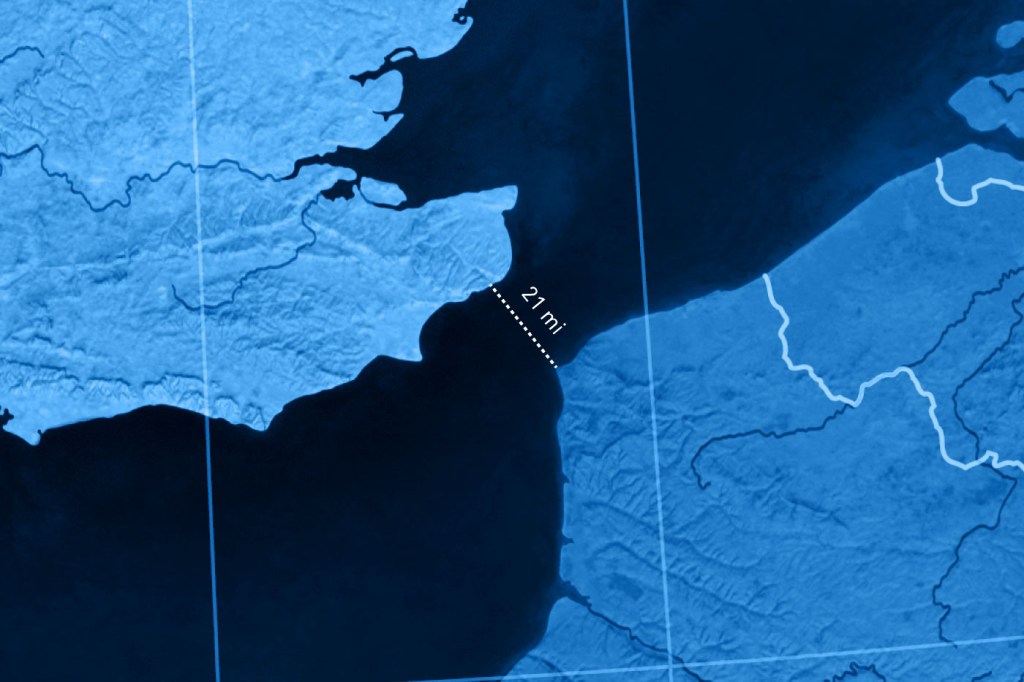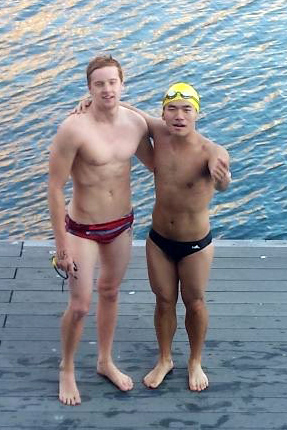The Mount Everest of open water swims

Open water swimming is not for the faint of heart, especially when you’re attempting to swim the English Channel. The strong currents and chilly water temperatures can sap the resolve of even the most valiant swimmers.
Northeastern graduates Yawei Hao and Matthew Knapik will take the plunge in August, and with nearly a half-dozen open water swims between them, they’re feeling pretty confident. The former members of Northeastern’s Swim Club will be joined by two other swimmers in a relay.
“Individually, more people summit Mount Everest than finish the English Channel swim,” Knapik said. “But we are doing it as a relay, so it won’t be as hard.”
The four-person relay aims to be in the water by 3:00 a.m.. Each person will swim for an hour, then switch places with a teammate on the boat following them. Starting in Dover, the team will swim 21 miles to its target landing point in Cap Gris-Nez, France.
On average, it takes 12 hours to swim the channel. A big part of the challenge comes from cross currents that can reach 26 miles per hour.

Yawei Hao and Matthew Knapik are preparing to swim the English Channel. Photo courtesy of Yawei Hao.
“When you pass the halfway point, there is a strong current that can push you south, “ Hao explained. “So whoever swims during those two or three hours has to be fast, because if they swim slowly, we’ll miss the landing point. And if that happens, it could take 20 hours to finish.”
It’s not just the current they’ll be resisting, but the cold. The Channel Swimming & Piloting Federation, the organization responsible for facilitating swims across the English Channel, prohibits the use of wetsuits.
“If I wore a wetsuit, I could probably do it by myself,” said Hao, who has swum Boston Harbor the San Francisco Bay to Alcatraz. “But the channel is only 60 degrees. That’s going to have a huge impact.”
Hao, Knapik, and their two team members regularly take cold showers to prepare their bodies for the low temperatures. They’re also eating more in the hope that their extra weight will keep them warm during the swim.
The team launched a GoFundMe page at the end of May and has already raised $3,345 out of its $5,000 goal. Half the proceeds will fund the trip while the other half will go to Compassionate Care ALS, a nonprofit that serves people with the neurodegenerative disease.
“I figure that charities get ‘hot,’ then are never really heard of again,” Knapik said when asked about their donation.“The ice bucket challenge was all the rave, but now people have moved on and don’t think twice about it. I think bringing something back into the light has a lasting impact on the cause.”





